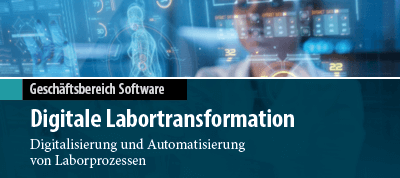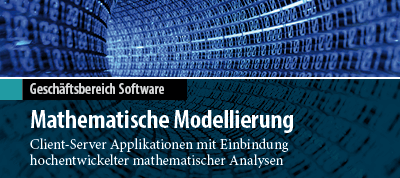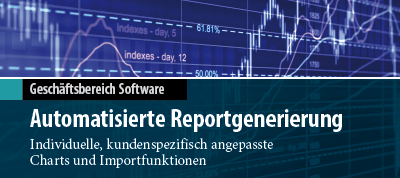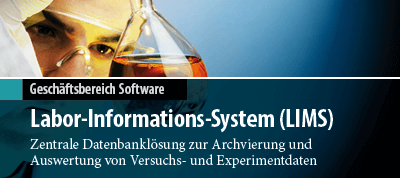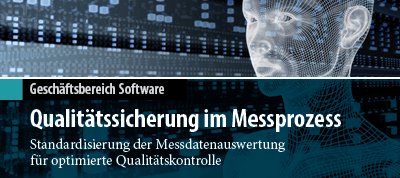There is no translation available.
Gaussian Features at a Glance
Features introduced since Gaussian 09 Rev A are in blue.
Existing features enhanced in Gaussian 16 are in green.
Fundamental Algorithms
- Calculation of one- & two-electron integrals over any contracted gaussian functions
- Conventional, direct, semi-direct and in-core algorithms
- Linearized computational cost via automated fast multipole methods (FMM) and sparse matrix techniques
- Harris initial guess
- Initial guess generated from fragment guesses or fragment SCF solutions
- Density fitting and Coulomb engine for pure DFT calculations, including automated generation of fitting basis sets
- exact exchange for HF and hybrid DFT
- 1D, 2D, 3D periodic boundary conditions (PBC) energies & gradients (HF & DFT)
- Shared-memory (SMP), cluster/network and GPU-based parallel execution
Model Chemistries
Molecular Mechanics
- Amber, DREIDING and UFF energies, gradients, and frequencies
- Custom force fields
- Standalone MM program
Ground State Semi-Empirical
- CNDO/2, INDO, MINDO3 and MNDO energies and gradients
- AM1, PM3, PM3MM, PM6 and PDDG energies, gradients and reimplemented (analytic) frequencies
- PM7: original and modified for continuous potential energy surfaces
- Custom semi-empirical parameters (Gaussian and MOPAC External formats)
- DFTB and DFTBA methods
Self Consistent Field (SCF)
- SCF restricted and unrestricted energies, gradients and frequencies, and RO energies and gradients
- EDIIS+CDIIS default algorithm; optional Quadratic Convergent SCF
- SCF procedure enhancements for very large calculations
- Complete Active Space SCF (CASSCF) energies, gradients & frequencies
- Active spaces of up to 16 orbitals
- Restricted Active Space SCF (RASSCF) energies and gradients
- Generalized Valence Bond-Perfect Pairing energies and gradients
- Wavefunction stability analysis (HF & DFT)
Density Functional Theory
Closed and open shell energies, gradients & frequencies, and RO energies & gradients are available for all DFT methods.
- EXCHANGE FUNCTIONALS: Slater, Xα, Becke 88, Perdew-Wang 91, Barone-modified PW91, Gill 96, PBE, OPTX, TPSS, revised TPSS, BRx, PKZB, ωPBEh/HSE, PBEh
- CORRELATION FUNCTIONALS: VWN, VWN5, LYP, Perdew 81, Perdew 86, Perdew-Wang 91, PBE, B95, TPSS, revised TPSS, KCIS, BRC, PKZB, VP86, V5LYP
- OTHER PURE FUNCTIONALS: VSXC, HCTH functional family, τHCTH, B97D, M06L, SOGGA11, M11L, MN12L, N12, MN15L
- HYBRID METHODS: B3LYP, B3P86, P3PW91, B1 and variations, B98, B97-1, B97-2, PBE1PBE, HSEh1PBE and variations, O3LYP, TPSSh, τHCTHhyb, BMK, AFD, M05, M052X, M06, M06HF, M062X, M08HX, PW6B95, PW6B95D3, M11, SOGGA11X, N12, MN12SX, N12SX, MN15, HISSbPBE, X3LYP, BHandHLYP; user-configurable hybrid methods
- DOUBLE HYBRID: B2PLYP & mPW2PLYP and variations with dispersion, DSDPBEP86, PBE0DH, PBEQIDH (see also below in "Electron Correlation")
- EMPIRICAL DISPERSION: PFD, GD2, GD3, GD3BJ
- FUNCTIONALS INCLUDING DISPERSION: APFD, B97D3, B2PLYPD3
- LONG RANGE-CORRECTED: LC-ωPBE, CAM-B3LYP, ωB97XD and variations, Hirao's general LC correction
- Larger numerical integrations grids
Electron Correlation
All methods/job types are available for both closed and open shell systems and may use frozen core orbitals; restricted open shell calculations are available for MP2, MP3, MP4 and CCSD/CCSD(T) energies.
- MP2 energies, gradients, and frequencies
- Double hybrid DFT energies, gradients and frequencies, with optional empirical dispersion (see list in "Density Functional Theory" above)
- CASSCF calculations with MP2 correlation for any specified set of states
- MP3 and MP4(SDQ) energies and gradients
- MP4(SDTQ) and MP5 energies
- Configuration Interaction (CISD) energies & gradients
- Quadratic CI energies & gradients; QCISD(TQ) energies
- Coupled Cluster methods: restartable CCD, CCSD energies & gradients, CCSD(T) energies; optionally input amplitudes computed with smaller basis set
- Optimized memory algorithm to avoid I/O during CCSD iterations
- Brueckner Doubles (BD) energies and gradients, BD(T) energies; optionally input amplitudes & orbitals computed with a smaller basis set
- Enhanced Outer Valence Green's Function (OVGF) methods for ionization potentials & electron affinities
- Complete Basis Set (CBS) MP2 Extrapolation
- Douglas-Kroll-Hess scalar relativistic Hamiltonians
Automated High Accuracy Energies
- G1, G2, G3, G4 and variations
- CBS-4, CBS-q, CBS-QB3, ROCBS-QB3, CBS-Q, CBS-APNO
- W1U, W1BD, W1RO (enhanced core correlation energy calculation)
Basis Sets and DFT Fitting Sets
- STO-3G, 3-21G, 6-21G, 4-31G, 6-31G, 6-31G†, 6-311G, D95, D95V, SHC, CEP-nG, LanL2DZ, cc-pV{D,T,Q,5,6}Z, Dcc-p{D,T}Z, SV, SVP, TZV, QZVP, EPR-II, EPR-III, Midi!, UGBS*, MTSmall, DG{D, T}ZVP, CBSB7
- Augmented cc-pV*Z schemes: Aug- prefix, spAug-, dAug-, Truhlar calendar basis sets (original and regularized)
- Effective Core Potentials (through second derivatives): LanL2DZ, CEP through Rn, Stuttgart/Dresden
- Support for basis functions and ECPs of arbitrary angular momentum
- DFT FITTING SETS: DGA1, DGA1, W06, older sets designed for SVP and TZVP basis sets; auto-generated fitting sets; optional default enabling of density fitting
Geometry Optimizations and Reaction Modeling
- Geometry optimizations for equilibrium structures, transition structures, and higher saddle points, in redundant internal, internal (Z-matrix), Cartesian, or mixed internal and Cartesian coordinates
- GEDIIS optimization algorithm
- Redundant internal coordinate algorithm designed for large system, semi-empirical optimizations
- Newton-Raphson and Synchronous Transit-Guided Quasi-Newton (QST2/3) methods for locating transition structures
- IRCMax transition structure searches
- Relaxed and unrelaxed potential energy surface scans
- Implementation of intrinsic reaction path following (IRC), applicable to ONIOM QM:MM with thousands of atoms
- Reaction path optimization
- BOMD molecular dynamics (all analytic gradient methods); ADMP molecular dynamics: HF, DFT, ONIOM(MO:MM)
- Optimization of conical intersections via state-averaged CASSCF
- Generalized internal coordinates for complex optimization constraints
Vibrational Frequency Analysis
- Vibrational frequencies and normal modes (harmonic and anharmonic), including display/output limiting to specified atoms/residues/modes (optional mode sorting)
- Restartable analytic HF and DFT frequencies
- MO:MM ONIOM frequencies including electronic embedding
- Analytic Infrared and static and dynamic Raman intensities (HF & DFT; MP2 for IR)
- Pre-resonance Raman spectra (HF and DFT)
- Projected frequencies perpendicular to a reaction path
- NMR shielding tensors & GIAO magnetic susceptibilities (HF, DFT, MP2) and enhanced spin-spin coupling (HF, DFT)
- Vibrational circular dichroism (VCD) rotational strengths (HF and DFT; harmonic and anharmonic)
- Dynamic Raman Optical Activity (ROA) intensities (harmonic and anharmonic)
- Raman and ROA intensities calculated separately from force constants in order to use a larger basis set
- Harmonic vibration-rotation coupling
- Enhanced anharmonic vibrational analysis, including IR intensities, DCPT2 & HDCPT2 method for resonance-free computations of anharmonic frequencies
- Anharmonic vibration-rotation coupling via perturbation theory
- Hindered rotor analysis
Molecular Properties
- Population analysis, including per-orbital analysis for specifed orbitals: Mulliken, Hirshfeld, CM5
- Computed atomic charges can be saved for use in a later MM calculation
- Electrostatic potential, electron density, density gradient, Laplacian, and magnetic shielding & induced current densities over an automatically generated grid
- Multipole moments through hexadecapole
- Biorthogonalization of MOs (producing corresponding orbitals)
- Electrostatic potential-derived charges (Merz-Singh-Kollman, CHelp, CHelpG, Hu-Lu-Yang)
- Natural orbital analysis and natural transition orbitals
- Natural Bond Orbital (NBO) analysis, including orbitals for CAS jobs. Integrated support for NBO3; external interface to NBO6
- Static and frequency-dependent analytic polarizabilities and hyperpolarizabilities (HF and DFT); numeric 2nd hyperpolarizabilities (HF; DFT w/ analytic 3rd derivs.)
- Approx. CAS spin orbit coupling between states
- Enhanced optical rotations and optical rotary dispersion (ORD)
- Hyperfine spectra components: electronic g tensors, Fermi contact terms, anisotropic Fermi contact terms, rotational constants, dipole hyperfine terms, quartic centrifugal distortion, electronic spin rotation tensors, nuclear electric quadrupole constants, nuclear spin rotation tensors
- ONIOM integration of electric and magnetic properties
ONIOM Calculations
- Enhanced 2 and 3 layer ONIOM energies, gradients and frequencies using any available method for any layer
- Optional electronic embedding for MO:MM energies, gradients and frequencies implemented so as to include all effects of the MM environment without neglecting terms in its coupling with the QM region
- Enhanced MO:MM ONIOM optimizations to minima and transition structures via microiterations including electronic embedding
- Support for IRC calculations
- ONIOM integration of electric and magnetic properties
Excited States
- ZINDO energies
- CI-Singles energies, gradients, & freqs.
- Restartable time-dependent (TD) HF & DFT energies, gradients and frequencies. TD-DFT can use the Tamm-Dancoff approximation.
- SAC-CI energies and gradients
- EOM-CCSD energies and gradients (restartable); optionally input amplitudes computed with a smaller basis set
- Franck-Condon, Herzberg-Teller and FCHT analyses
- Vibronic spectra including electronic circular dichroism (ECD) rotational strengths (HF and DFT)
- Resonance Raman spectra
- Ciofini's excited state charge transfer diagnostic (Dct)
- Caricato's EOMCC solvation interaction models
- CI-Singles and TD-DFT in solution
- State-specific excitations and de-excitations in solution
- An energy range for excitations can be specified for CIS and TD excitation energies
Self-Consistent Reaction Field Solvation Models
- New implementation of the Polarized Continuum Model (PCM) facility for energies, gradients and frequencies
- Solvent effects on vibrational spectra, NMR, and other properties
- Solvent effects for ADMP trajectory calcs.
- Solvent effects for ONIOM calculations
- Enhanced solvent effects for excited states
- SMD model for ΔG of solvation
- Other SCRF solvent models (HF & DFT): Onsager energies, gradients and freqs., Isodensity Surface PCM (I-PCM) energies and Self-Consistent Isodensity Surface PCM (SCI-PCM) energies and gradients
Ease-of-Use Features
- Automated counterpoise calculations
- Automated optimization followed by frequency or single point energy
- Ability to easily add, remove, freeze, differentiate redundant internal coords.
- Simplified isotope substitution and temperature/pressure specification in the route section
- Optimizations
- Retrieve the nth geometry from a checkpoint file
- Recompute the force constants every nth step of a geometry optimization
- Reduce the maximum number of allowed steps, including across restarts
- 180° flips detected and suppressed for better visualization
- Freezing by fragment for ONIOM optimizations
- Simplified fragment definitions on molecule specifications
- Many more restartable job types
- Atom freezing in optimizations by type, fragment, ONIOM layer and/or residue
- QST2/QST3 automated transition structure optimizations
- Saving and reading normal modes
- %OldChk Link 0 command specifies read-only checkpoint file for data retrieval
- Default.Route file for setting calculation defaults
- Enhanced set of equivalent Default.Route directives, Link 0 commands, command line options and environment variables
Integration with External Programs
- NBO 6
- COSMO/RS
- AIMPAC WfnX files
- Antechamber
- ACID
- Pickett's program
- DFTB input file
- General external interface script-based automation, results post-processing, interchanging data/calculation results with other programs, and so on:
- Interface routines in Fortran, Python and Perl (open source)
- Keyword and Link 0 command support







